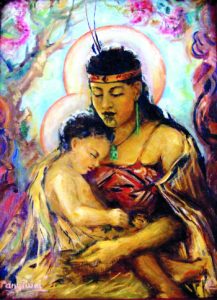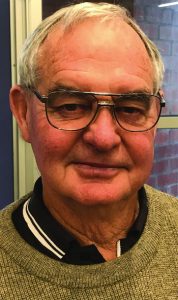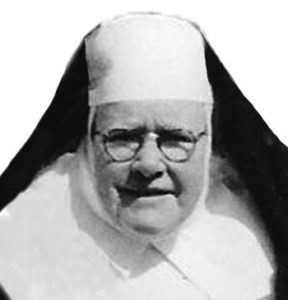Tangiwai and Whaia Te Whaea
This oil painting Tangiwai (River of Tears), by Julia Lynch, Sister Mary Lawrence RSM, depicts the Mother Mary and her Son dressed in Māori kākahu (clothing). The painting resides at Hiruharama, Jerusalem, on the Whanganui River.
Pā Hemi Hekiera, during his pastoral ministry, was instrumental in gathering the family Māori for catechetical training and mission to families.
The original inspiration came under the title, Ahikā o te Wairua Tapu (The Burning Fire of the Holy Spirit). It was developed under the titles, Waaka Aroha (The Vessel of Love), Kura Tau (The School of Grace), and finally, Whaia te Whaea (Follow the Mother). These gatherings, based on Māori spirituality and the teaching of the Catholic Church, enabled Māori to proclaim the Gospel with confidence. Catechists were given a good grounding in the principles of Vatican II, and men responded to the call to lead as deacons in the Catholic communities.
 Sister Mary Lawrence’s painting, Tangiwai, inspired this development. The painting depicts the Mother Mary and Child. Mary has a tear on her cheek, crying for her Son: “Be it done unto me according to your word”, would be repeated in the garden of Gethsemane, “not my will but yours be done”. The Mother holds all who suffer in her arms, but particularly the family Māori, in the challenges that have faced them to be Māori in the social and religious milieu of Aotearoa New Zealand.
Sister Mary Lawrence’s painting, Tangiwai, inspired this development. The painting depicts the Mother Mary and Child. Mary has a tear on her cheek, crying for her Son: “Be it done unto me according to your word”, would be repeated in the garden of Gethsemane, “not my will but yours be done”. The Mother holds all who suffer in her arms, but particularly the family Māori, in the challenges that have faced them to be Māori in the social and religious milieu of Aotearoa New Zealand.
The inspiration of the unconditional and faithful love of the Mother Mary is at the heart of a mother’s care for her children and is present in all mothers, but particularly the Māori. “My Father loves you, trusts you, forgives you and continues to send you the children”, says the Christ. This wonderful gift of life is being treasured by the people Māori, particularly among the elderly.
She will guide all our families as a Mother with a heart beating at one with her Son. She has a special place in that heart for the family Māori. The Rosary brings her into our homes.
Visit her sometime at Hiruharama on the awa Whanganui.
Why is the painting called Tangiwai?
Mary wears a moko kauae (chin tattoo) and amokura (red-tailed tropic bird)feathers in her hair. For jewelry she wears kuru (ear pendants) and a pekapeka (neck pendant) made of tangiwai pounamu.
Pounamu refers to various kinds of nephrite jade and bowenite found in southern New Zealand. Tangiwai (literally, “tear-water” or “river of tears”) is a type of pounamu that is nearly transparent; Māori legend claims it originated from the tears of a lamenting woman.
In titling the work Tangiwai, Sr Mary Lawrence invokes the mythology of this treasured gem and grafts Mary into it.
Why does Mary weep? Because she knows a sword will pierce her heart. She considers, along with Simeon’s words, all the other messianic prophecies given throughout the history of her people, and wishes there were another way for salvation to be achieved—a way other than the suffering and death of her little boy.
One could even extend the interpretation of the work to say that Mary, in her great compassion, weeps for the suffering of the Māori people, or of all humanity.
See Victoria Emily Jones
https://thejesusquestion.org
Julia Lynch,
Sr Mary Lawrence RSM
The daughter of Irish Catholic immigrants, Julia was born in 1896, in Tokomaru. Her family then moved to Palmerston North, where she studied art under G H Elliott. Her studies continued at the Slade School in England from 1921 to 1923, where she won the gold medal for portrait painting, the first New Zealander to do so. Her supervisor was Professor Henry Tonks.
After returning to New Zealand she joined the Sisters of Mercy (RSM).
She was a prolific portrait painter, painting many iconic figures including Jean Batten, Norman Kirk, many All Blacks, Tony O’Reilly, Sir Arthur Porritt and prominent members of Wellington and Palmerston North society.
Her paintings were exhibited at the Paris Salon, in Britain, Rome and the US.
She won the Kelliher Art Prize in New Zealand in 1975 for her portrait of a ‘Polish Dancer’.
Her life was spent teaching and painting at St Mary’s College in Wellington where she died in 1975.


 Entries(RSS)
Entries(RSS)